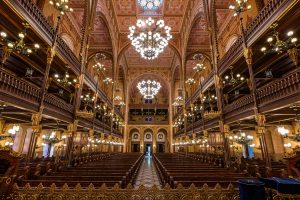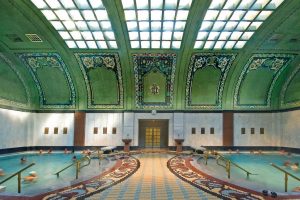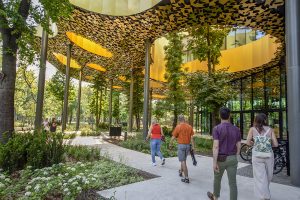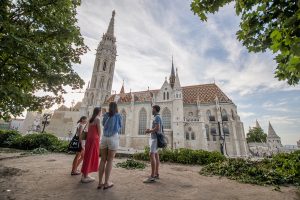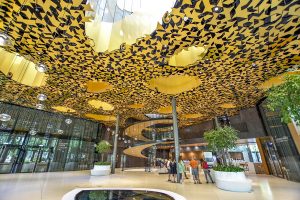With over 900 finished works under his belt, József Hild is one of the most renowned architects of Hungarian Neoclassicism, and he also played an important part in defining the characteristic cityscape of mid-19th century Pest. Commemorating Hild’s 230th birthday (8 December, 1789), we’ve rounded up the master’s finest works found in Budapest. (That is, the ones that haven’t been blown up or torn down in the 20th century).
St. Stephen’s Basilica
Construction works on Budapest’s largest church (built as a sign of gratitude for God’s intervention during the 1838 flood of Pest, when hundreds of people took refuge on the small hill where the present-day basilica stands) began in 1851 under the guidance of architect József Hild, who envisioned a Neo-classicist basilica. Having died in 1867, Hild’s unfinished project was handed over to Miklós Ybl, who gave the plans a Neo-Renaissance touch. Sadly, not even Ybl could see his dreams come to fruition, as the collapse of the church’s massive dome in 1868 delayed the construction considerably, and he passed away more than a decade before the building was finished. The basilica was eventually completed by 1906, and with a height of 96 meters, it is still the second tallest church in Hungary. The first one, the Esztergom Basilica, was also designed by Hild.
1051 Budapest, Szent István tér 1.
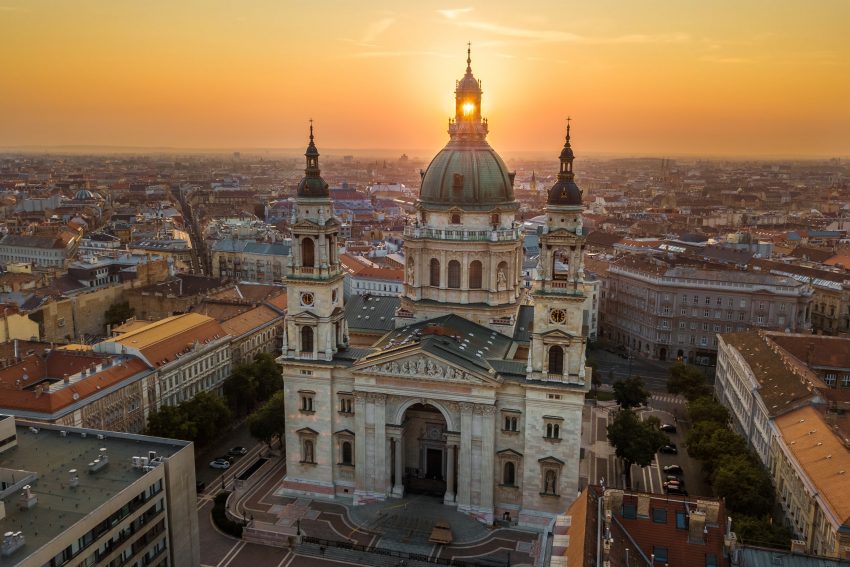
Hild Villa
Designed by and built for himself in 1844, József Hild’s family villa is located just a few minutes’ walk from MOME University on Budakeszi út. With its front steps, tympanums and portico colonnade, the off-white building looks like either a Greek temple or a museum. The current building is the result of a number of extensions spanning across the last 130 years: first, two new rooms were added by József Pucher a few years after Hild’s death, then the villa was expanded with more sections towards its back. Finally, it was freed from its unnecessary and low-quality tack-ons and refurbished in 2016 by architect László Kokas. Today it serves as the research institute of the Hungarian Academy of Arts.
1121 Budapest, Budakeszi út 38.
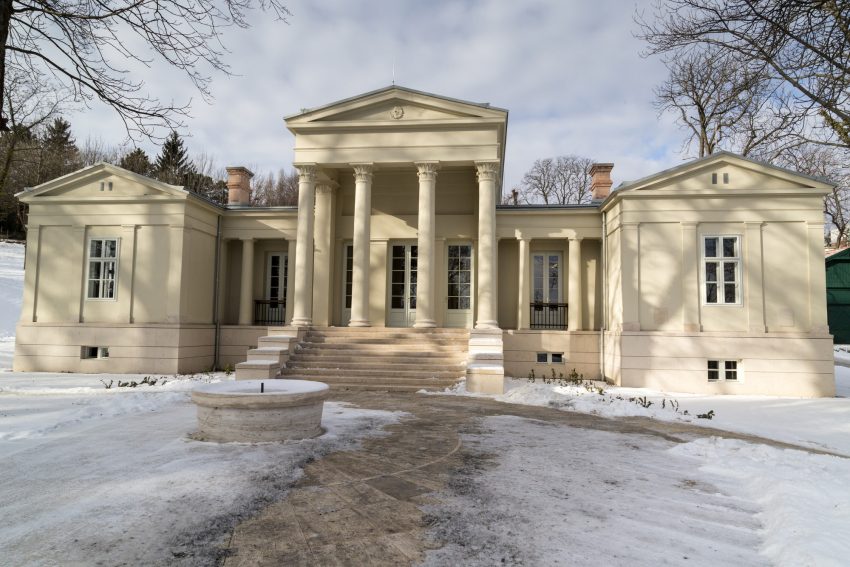
Seven Electors House
Situated on the corner of Váci and Aranykéz utca, Hild’s three-storey tall apartment building was constructed in 1840 for count Sándor Nákó in place of two buildings erected there during the late 1700s, one of them being the famous Seven Electors Inn (the name stood the test of time, the building didn’t), whose “inexpensive and clean beds” were praised by the likes of English clergyman and traveller Edward Daniel Clarke, and whose saloon gave home to the concert of 11-year old Ferenc Liszt. A coffee house was established on the ground floor of the building, which was eventually turned back into a hotel in 1862. In 1910 the building’s courtyard and restaurant were transformed into a cinema, which is occupied today by the company of Pest Theatre. Since 1906, the building also accommodates a flower shop: Philanthia (designed by Albert Kálmán Kőrössy) has one of the city’s most beautiful window shops, and still operates with the original art nouveau furnishings.
1052 Budapest, Váci utca 9.

Gerbeaud House
The story of Vörösmarty tér’s world-renowned Gerbeaud House is rather funny, as it stands today on the ground where another building of Hild’s formerly stood for a good thirty years, before being razed to the ground at the end of the 1850s. Hild was asked to design two buildings (a bank office and an apartment house) on the newly vacated plot, on the condition that they will share the same facade. The two separate sections were finally merged in 1910, when legendary confectioner (and owner of the building’s eastern half) Émile Gerbeaud bought the headquarters of the Hungarian Commercial Bank of Pest. Hild’s classicist design (complete with monumental Corinthian pilasters and a number of statues) was later expanded on by architect Sándor Fellner, whose additional fourth floor was created in Art Nouveau style.
1051 Budapest, Vörösmarty tér 7-8.
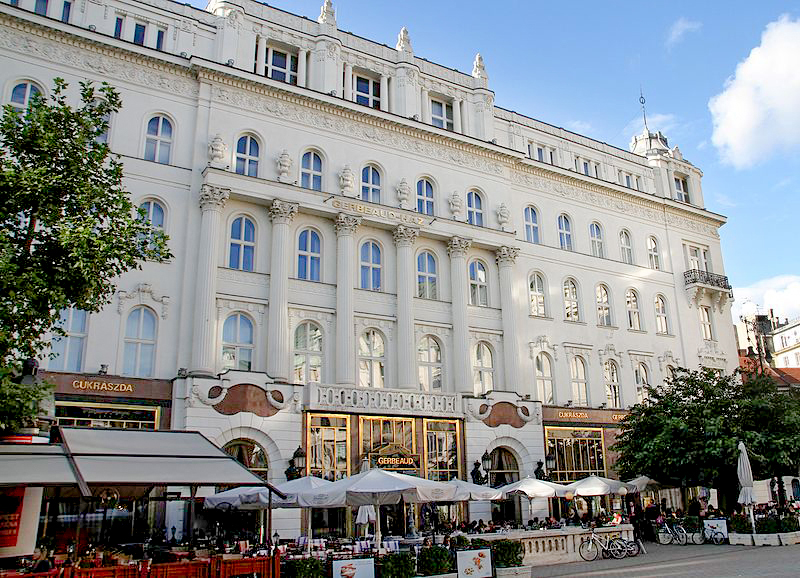
Hotel Tigris
With a history going back as far as 1826, this three-storey building (located on the corner of Mérleg and Nádor utca) takes its name after the inn and coffee house that used to stand in its place. Built in 1840 following the plans of Hild, the hotel was bought by the Trieste Insurance Company in 1900, and turned into an apartment building. Balconies were added, and the ground floor facade was significantly modified. Luckily, the original classicist doorway design was left untouched, and so was the tiger statue placed above it. Today, the building gives home to two restaurants, one of them called Tigris, and the other Hilda, named so in honor of József Hild.
1051 Budapest, Nádor utca 5.
Written by Márton J. Vizy
